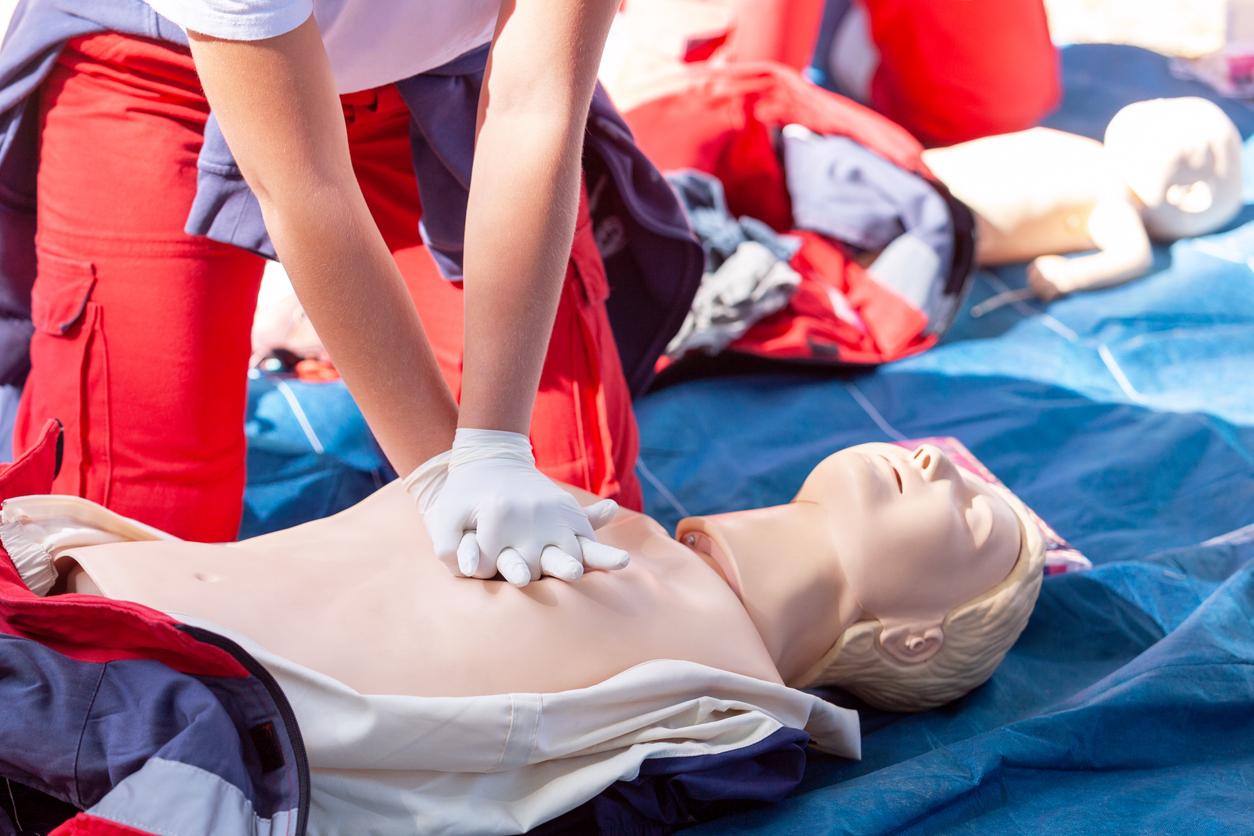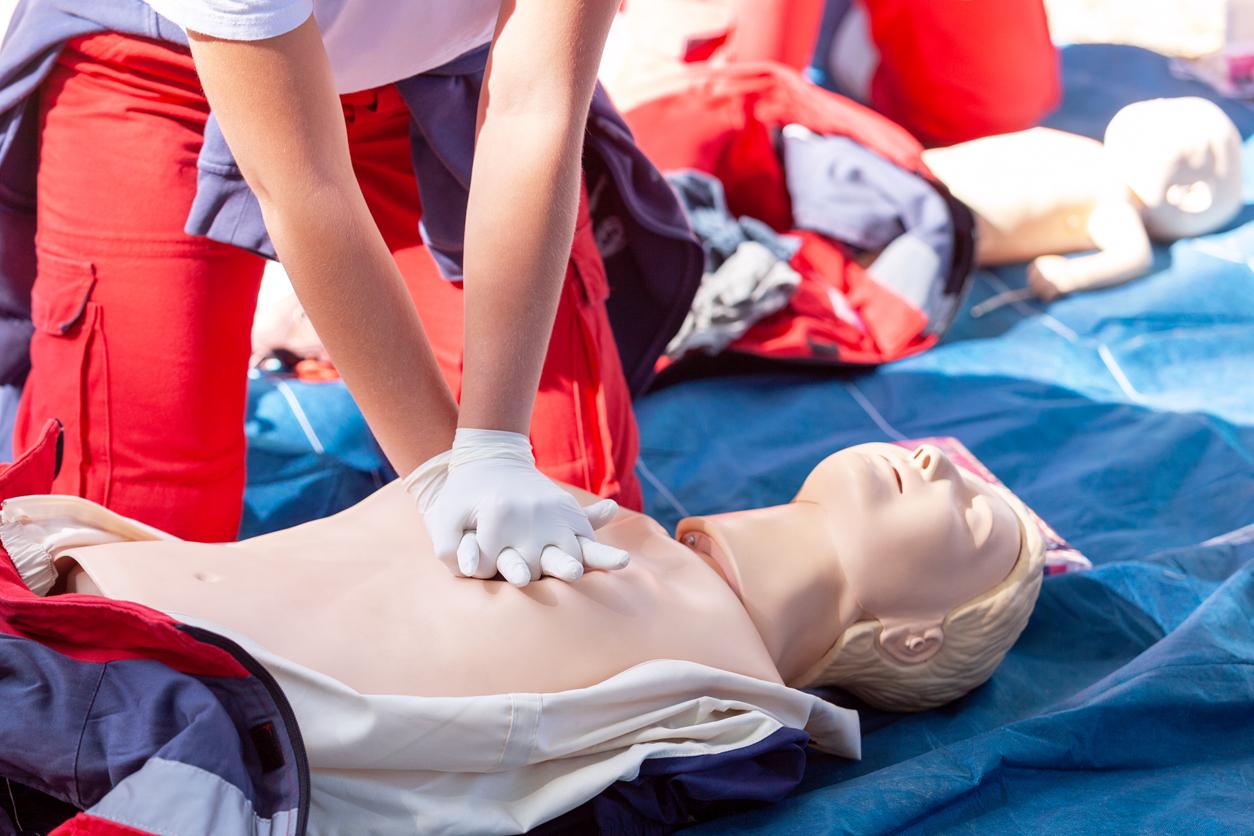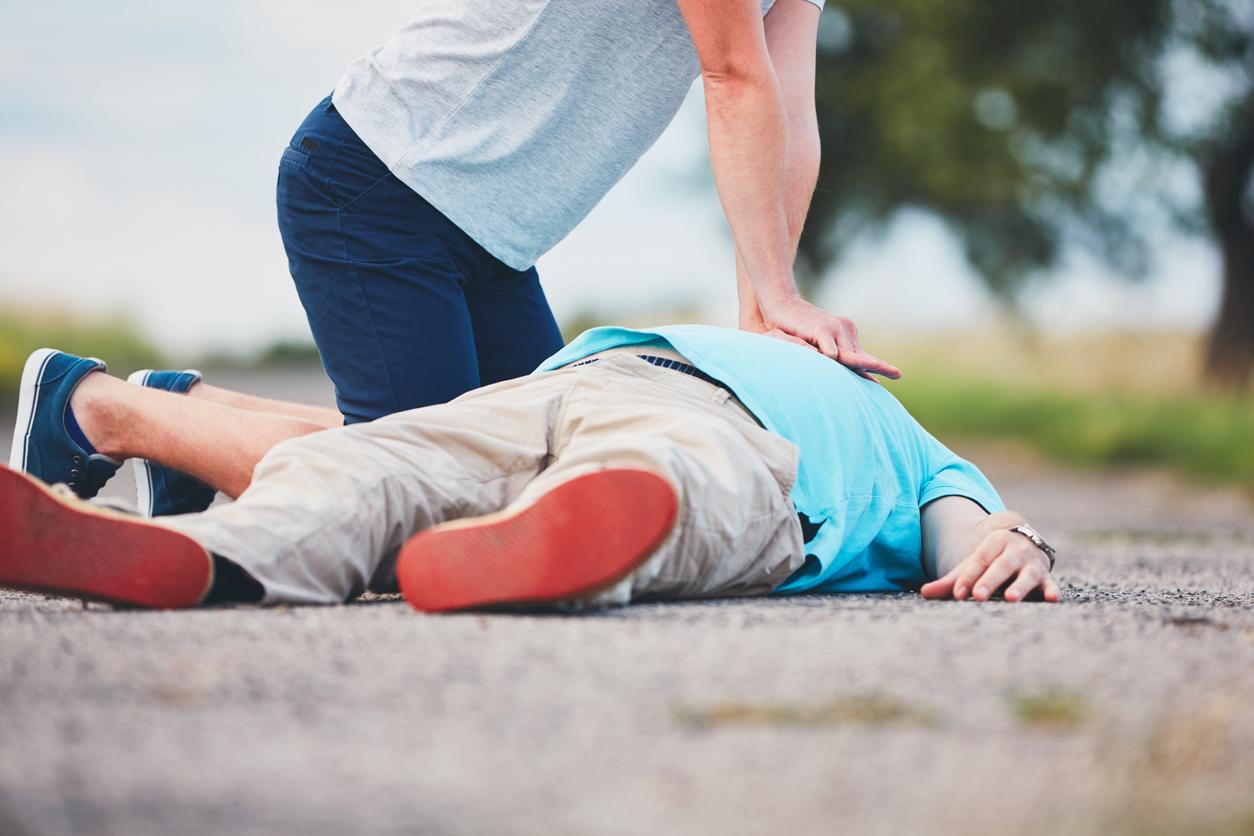December 20, 2007 – The fear of “mouth to mouth” should no longer be a barrier to assisting a person in cardiac arrest: a simple cardiac massage – without artificial respiration – would give as much chance of survival as the technique comprehensive cardiopulmonary resuscitation (CPR).
This is what emerges from the analysis of 11,275 cases of heart attacks or cardiac fibrillations occurring outside hospitals in Sweden, from 1990 to 2005.
Thus, since the ambulance took less than eight minutes to arrive, the survival rates, one month after cardiac arrest, were 7.2% for those who received CPR, and 6.7% for those who received CPR. those who have had only manual chest compressions. A difference that is not significant, according to the researchers.
Act quickly
The effectiveness of chest massage without mouth-to-mouth would be mainly attributable to the speed of the intervention following a cardiac arrest, according to the authors of the study.
“The data shows the overwhelming importance of starting chest compressions quickly and maintaining them until help arrives,” they write.1.
|
Survival rate according to ambulance response time |
||
|
Response time |
Standard CPR |
Heart massage only |
|
0 to 8 minutes |
11.5% |
9.5% * |
|
More than 8 minutes |
2.7% |
1.8% * |
* Non-significant differences, according to researchers
It is estimated that every minute that passes without assistance decreases the victim’s chances of survival by 7% to 10%. Conversely, prompt intervention increases these chances by 30%.2.
Responders to the 9-1-1 emergency service should guide the responder to quickly perform cardiac massage when the situation calls for it, the researchers recommend.
For a little over a year, in Quebec, anyone trained for this purpose can use an automated external defibrillator (AED). More and more public places are equipped with this device which increases the chances of survival of a person in cardiac arrest.
Martin LaSalle – PasseportSanté.net
1. Bohm K, Rosenqvist M, Herlitz et al. Survival is similar after standard treatment and chest compression only in out-of-hospital bystander cardiopulmonary resuscitation, Circulation, December 18, 2007, Vol. 116, No. 25, 2908-12.
2. See our news about it.











-1708094208.jpg)



